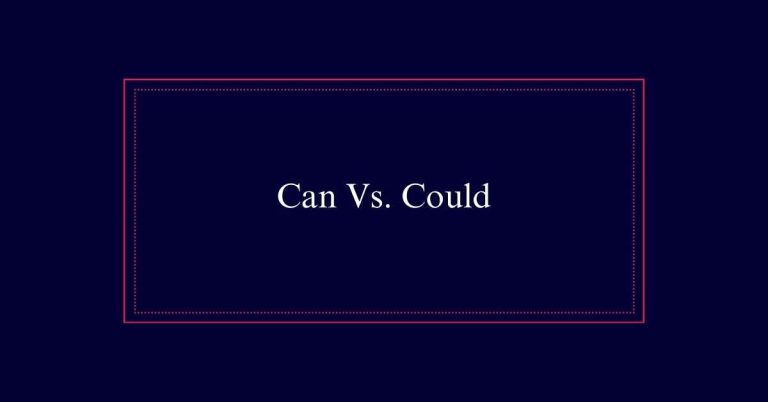Modeling Vs. Modelling
The difference between ‘modeling’ and ‘modelling’ depends on regional spelling conventions. In American English, ‘modeling’ with one ‘l’ is the preferred spelling, simplifying the form. In contrast, British English uses ‘modelling’ with two ‘l’s, consistent with other verb forms like ‘travelling.’ Though usage varies by region, personal preference and the audience’s background greatly influence which form to use.
Spelling With One ‘L’ or Two
The spelling of the word with one ‘l’ or two depends on whether you are using American or British English. In the United States, the preferred spelling is ‘modeling’ with a single ‘l.’ This follows American English rules, where verbs ending in a vowel and ‘l’ do not double the ‘l’ when adding a suffix.
Conversely, in British English, the spelling is ‘modelling’ with two ‘l’s. This aligns with the British rule that requires doubling the ‘l’ in such cases. The choice between ‘modeling’ and ‘modelling’ often hinges on regional practices and audience expectations.
British English Rules
In British English, verbs ending in a vowel followed by ‘l’ double the ‘l’ when adding a suffix that starts with a vowel. This rule explains why ‘modelling’ is the preferred spelling in British English.
The doubling of the ‘l’ helps to maintain the correct pronunciation and linguistic consistency. Understanding this rule is essential for anyone writing in British English, as it affects numerous verbs, not just ‘model’.
- Travelling: ‘Travel’ becomes ‘travelling’ when adding ‘ing.’
- Cancelled: ‘Cancel’ becomes ‘cancelled’ when adding ‘ed.’
- Fuelled: ‘Fuel’ becomes ‘fuelled’ when adding ‘ed.’
- Labelled: ‘Label’ becomes ‘labelled’ when adding ‘ed.’
American English Rules
Unlike British English, American English does not require doubling the ‘l’ when adding a suffix starting with a vowel to verbs ending in a vowel followed by ‘l.’ This rule simplifies the spelling of words such as ‘modeling’ instead of ‘modelling.
In the United States, this single ‘l’ rule is applied consistently across various contexts. For example, financial modeling, physical fitness modeling, and other professional uses all follow the same pattern. The American English approach aims to streamline spelling and reduce complexity.

Personal Preference
Personal preference often dictates the choice between ‘modelling’ and ‘modeling.’ While regional guidelines provide a framework, individual preference plays a significant role. Writers often select the form that aligns with their personal style or the audience’s expectations.
Here are a few factors influencing personal choice:
- Cultural Background: People tend to use the spelling common in their region.
- Audience: Writers may choose based on the predominant usage of their readers.
- Professional Environment: Industry standards can dictate which form is preferred.
- Consistency: Maintaining a uniform spelling in all documents is important for professionalism.
British English Examples
British English typically employs the spelling ‘modelling’ in various contexts. This spelling is used when discussing careers and industries related to fashion, art, and design.
For instance, Amy searched for child modelling agencies after receiving compliments. Similarly, Miranda contemplates leaving her modelling career for a domestic life. Gisele Bundchen retired from modelling after two decades. These examples illustrate how the term is used in everyday language in the UK.
American English Examples
In American English, the preferred spelling is ‘modeling’ in various professional and everyday contexts. This spelling is consistently used across different sectors, from business to entertainment.
Below are some common examples:
- The U.S. Library utilizes Willis Towers Watson’s RiskAgility FM platform for financial modeling.
- Maintaining physical fitness is essential in the modeling profession.
- Show packages are a customary practice in the modeling industry.
- Real-world applications of ‘modeling’ include areas like data analysis and predictive analytics.
Historical Evolution
The term ‘modeling’ has undergone significant changes in meaning and usage since the seventeenth century. Initially, the verb form ‘modelize’ was common. By the latter half of the century, the term had evolved to ‘model.’
The modern sense of showcasing garments and fashion emerged in the early twentieth century. Over time, ‘modeling’ evolved beyond fashion to include financial, scientific, and architectural applications. These semantic shifts reflect broader cultural and technological changes.
The spelling variations, ‘modeling’ in American English and ‘modelling’ in British English, further illustrate the term’s regional evolution.
Seventeenth-Century Usage
During the seventeenth century, the term ‘modeling’ was commonly referred to as ‘modelize.’ This older form reflects the linguistic trends of the time.
The term described the act of creating or shaping models, though its usage has evolved greatly over the centuries. By the latter half of the century, ‘model’ began to replace ‘modelize,’ marking a shift in the language’s development.
- Historical Context: ‘Modelize’ was used in various creative and scientific fields.
- Linguistic Shift:The change from ‘modelize’ to ‘model’ showcased changing language norms.
- Usage: ‘Modelize’ was prevalent in both artistic and practical applications.
- Evolution: The term’s transformation mirrors broader shifts in English vocabulary.
Twentieth-Century Changes
With the linguistic shift from ‘modelize’ to ‘model’ established, the early twentieth century marked a significant evolution in the term’s application and meaning. During this period, ‘modeling’ began to be associated mainly with showcasing fashion and garments. This new usage expanded beyond its architectural and artistic roots.
The term started to encapsulate the modern fashion industry, defining the roles and activities of individuals who display clothing and accessories. Additionally, advancements in photography and media propelled the visibility and professionalization of modeling. As a result, modeling became a recognized career path, influencing culture and commerce.
Regional Differences
Frequently, the choice between ‘modelling’ and ‘modeling’ hinges on regional preferences. In British English, ‘modelling’ with two Ls is standard. Conversely, ‘modeling’ with one L is the norm in American English. These differences reflect broader distinctions between the two versions of English. Understanding these regional variations is crucial for effective communication, especially in written forms.
In British English, verbs ending in a vowel and ‘l’ double the ‘l’ when adding a suffix starting with a vowel.
American English omits the doubling of the ‘l’ in such cases.
The choice of spelling can depend on the audience’s location.






